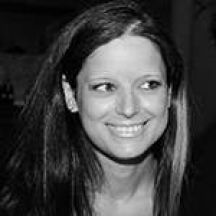As a child, I drew. Raised Catholic, stained glass windows brought light and color together. Ellen, my birth name in Irish, Gaelic, Celtic means bringer of light; destiny and fate brought me to photography.
Ever since its invention back in the 19th century, photography has been documenting life. At the same time it focuses on inviting audiences to a rather subjective world, while trying to be taken serious as an art form. Photography has always been considered a male dominated profession, but luckily things are changing. Scholars, writers, bloggers, photography students and enthusiasts have been giving due to the female pioneers of the field. Most of them were always standing and/or hiding in the shadows, oblivious to how much they could acclaim and accomplish. Arguably, the technique, concepts and thematic female photographers use differ from those of a male photographer. At a time when most women were convinced that their place was in the kitchen and certainly not in the dark room, there were those who were struggling to surpass their male counterparts and work towards gaining respect and recognition for their work.

Ellen Carey (American photographer, 1952-) is known for conceptual photography exploring non-traditional approaches involving process, exposure, and paper. She is an educator, independent scholar, guest curator, and lens-based artist. Her unique experimental work spans several decades highlighted by 70 one-person exhibitions, several hundred group exhibits, and essays published under either Pictus & Writ (2008-2021) or in tandem with multiple books, exhibition catalogs, lectures, interviews, reviews, and grants. She emphasizes photography's indexical drawing with light and light with color. Her innovative, technical knowledge and burgeoning imagination dare viewers to engage with the arc of time beginning with the earliest memory of light and shadow up to the present of momentary rainbows. Her performative record is a visual all or nothing, her 'zero'. Her photographs no longer represent object-subject relations, but rather the twin interplay of light and shadow, stark in black and white minimalism and freeing color itself into a kaleidoscope of abstraction. Well developed in the 20th century - Abstract Expressionism, Minimal, Conceptual Art - Carey's photographic pictures of nothing upend the medium's collective histories by asking us: 'What is photography?' or 'Is it a photograph?' The photographer has worked in a variety of cameras and formats: Polaroid SX-70 and Polaroid PN film; black and white to color; 35mm, medium format and large format. Her experimental images see a range of genres and themes; they are one-of-a-kind. Carey is currently showcasing her body of work 'Let There Be Light: The Black Swans of Ellen Carey' at Galerie Miranda, in Paris.

Alix Cléo Roubaud (Canadian photographer, 1952-1983) was born in Mexico to Canadian diplomats, and grew up in various countries - including Egypt and Portugal. Initially, she studied architecture and psychology at the University of Ottawa, but then moved to Aix-en-Provence to study philosophy. Because of Roubaud's fragile lungs, she preferred warmer climates and part of her moving to France was to help with her asthma. In 1978, Roubaud began visiting the spa town of La Bourboule each year to aid her health. In 1979, she abandoned her studies to concentrate on her photography. That's also when she met her future husband, writer, poet and academic Jacques Roubaud. In 1980, Alix presented her first - and only complete - series entitled 'Si quelque chose noir', a seventeen-image sequence mirroring the syllable count of a haiku. Following the medieval Japanese tradition of 'Rakki tai' or 'taming one's demons', in the series she imagines her own death in order to confront it. She passed away before completing her next major project. Roubaud would not be considered a major figure in the Canadian art world - nor in the photography world in general - since she died when she was only 31 years old. It was somewhat difficult researching her work and finding information on her person and on her photographic achievements. During her short lifetime, Roubaud's work was only really known to her intimates. One year before her death, she tried approaching a number of Parisian galleries, but unfortunately her efforts were in vain. Any of her minor notoriety has arrived posthumously and that is thanks to her husband's dedication to archive and promote Alix's work. The fact is, Roubaud used the medium of photography as a canvas and intended on exploring and transcending the different layers of metaphysics, philosophy and intimacy. Aware of her health limitations, Roubaud accepted her own mortality and knew she had no time to waste. Perhaps that is why she would infuse each frame of her work with her own sense of ephemerality and a constant effort to force it back. Alix Cléo Roubaud experienced life as a temporary displacement of her own inevitable end and her photography examines the limits of self-expression. In 2014, the Bibliothèque nationale de France presented a retrospective of her work, 'Quinze minutes la nuit au rythme de la respiration'.

All photography struggles against death and the passage of time.
We will continue talking about female names that left their mark in photography and about contemporary female photographers who are still to emerge. There are a lot of female photographers out there deserving of praise and we can only hope to cover as many of them as we can. Please, follow this space to find out more.






